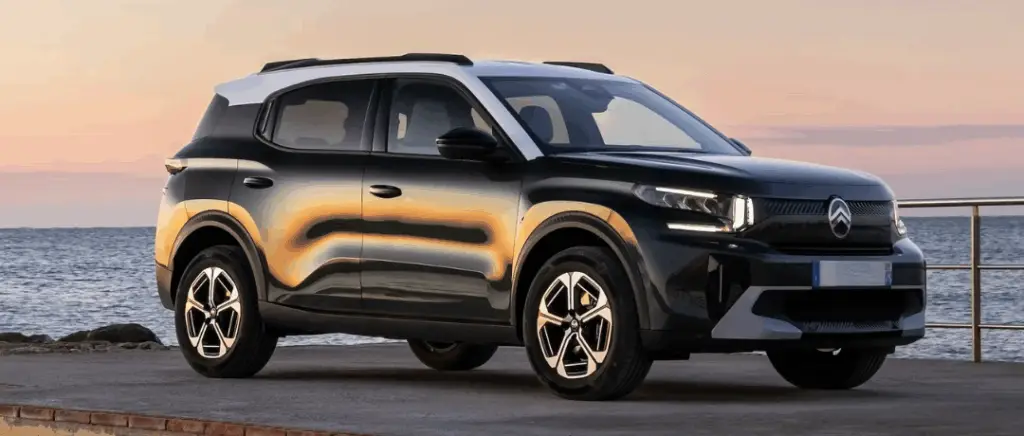The development of multi-energy fleets to support the energy transition in cities
The energy transition is a long-term project that involves fleet changes. With this in mind, Anne Hidalgo has decided to ban diesel vehicles from the streets of the capital by 2024, and petrol vehicles by 2030.
See also - [FULL GUIDE] Everything you need to know about your vehicle fleet
The challenge of fleet electrification and the underlying implications
The energy transition for fleets
As part of the energy transition for green growth announced in 2015 in the Energy Transition for Green Growth Act: Paris City Council wanted to set an example. In 2017, it declared that its fleet will be made up entirely of electric and petrol vehicles by 2020.
Hervé Foucard, the Town Hall's Head of Vehicle Transport, says the change will be gradual, with preference given to hybrid and electric vehicles, and to petrol when such changes are not possible.
During this changeover, the Town Hall noted :
- Changing the fleet will result in savings of around €2,000 to €3,000 per vehicle,
- Maintenance is less expensive when the diesel vehicle is replaced (if the vehicle is driven <15,000 km/year).
To underline the importance of a rapid energy transition, the Town Hall has set itself the target of converting 90 % of its 1,500 vans to be electric by 20211,350 vans.
In the same energy transition approach, RATP has announced the "Bus 2025 "in 2019.
The plan involves converting all twenty-five bus centres to electric and biogas power by 2025. This will involve the replacement of 4,600 buses with clean vehicles, broken down as follows: 80% electric buses (3,680 buses) and 20% biogas buses (920 buses).
This change will result in a reduction of 50% l'carbon footprint bus traffic.
Good to know: biogas is a gas produced from the fermentation of organic waste (agricultural, industrial, etc.). It makes it possible to reuse waste and offers greater energy efficiency. autonomy than electric batteries.
The electrification of its fleets is a first step towards energy transition and sustainable mobility in the city, contributing to the goal of carbon neutrality by 2040.
However, we can ask ourselves whether the energy transition is being carried out simultaneously by businesses, whether there will be sufficient electricity production capacity and whether there will be enough recharging points. That's what we're going to look at in this second part.
Is France's electricity generation capacity sufficient to support the development of electric cars?
By 2025, more than five thousand electric vehicles will be on the road in the capital. This will replace the thermal vehicle by 2035. Before considering the energy transition, the question of French electricity generation capacity was raised.
The answer is yes, according to a report by EDF subsidiary RTE (Rapport de transports électriques), produced in conjunction with the AVERE France association. The electricity giant has been asked by Elisabeth Borne not to rely solely on fossil fuels and to consider a scenario based on 100% green energy.
The electric vehicle will account for 8% of electricity consumption. Consumption and use of other services will decline, offsetting the increase in electricity demand.
However, a study by Accenture points out that such a change in the market will lead to an energy switchover. The players who will have a role to play in this future challenge are :
- Current electricity suppliers The time is ripe for transition and adaptation. Partnerships, mergers and the emergence of new players are likely, as part of the development of a new organisation to meet growing demand.
- Builders and engineers : the energy flexibility challenge This will help to smooth out peaks in electricity production, and enable production capacity to be adapted to the needs of the market. to a fixed reference point.
The development of public recharging infrastructures
Towns and cities have an essential role to play in the development of public recharging infrastructures. Their deployment decisions have an impact on sustainable mobility.
France is in line with the European average
The European Union recommends a ratio of one charging point for every ten electric vehicles. In September 2019, there were 28,687 charging points in France. At that time, there was one charging point for every 7.2 light electric vehicles on the road, equivalent to one charging point for every nine hybrids. France therefore went further than the recommended ratio.
The Avere quarterly barometer (European Automobile Manufacturers' Association) lists nearly 29,600 charging points open to the public across France, representing a total of 1.5 million charging points. 15% increase in one yearof which 3% were registered in the first three months of 2020. The first two months of 2020 also saw 21,783 light electric vehicles registered in France, equivalent to more than 6 months of registrations in 2019.
However, the network of terminals is not as effective as it first appears.
Hervé Foucard, Head of Transport at Paris City Council, is aware that in order to achieve the announced targets, it will be necessary to increase the number of public recharging facilities.
Progress over the coming months
The Île-de-France region accounts for 19 % of registrations, with 4,092 electric vehicles put on the road. While the Paris region has the highest concentration of charging points, it also has the highest number of electric vehicles on the road. highest concentration of electric vehicles.
At the end of February this year, there were 61,630 electric vehicles and 4,400 charging points in the Paris Region. The weighting is :
- 2512 under normal load
- 1734 in accelerated charge
- 154 fast charge
The terminal concentration is 14 vehicles per terminal.
The weighting of the Île-de-France terminals is :
The development ofrecharging infrastructure fulfilled the conditions requiredbut in the end not enough. As the deployment of slow charging is restrictive, it is necessary to increase the number of fast charging points.
To ensure efficient deployment, it is necessary to consider :
- The need within metropolitan areas: most will be EPZ by the end of 2020 and 2021. The Town Hall is encouraging the installation of charging points in town centre homes.
- Optimising the participation of private partners: the installations are subsidised or co-financed by the State. For example, the ADVENIR programme (Aide au Développement des Véhicules Électriques grâce à des Nouvelles Infrastructures de Recharge), which provides funding of 40% the installation of terminalsThis, in turn, encourages the emergence of new customers.
Despite technological advances in vehicles and recharging systems, there will always be a need for vehicle charging. As for the services on offer, the trend is towards the widespread use of recharging systems to provide access to charging for as many customers as possible.
France is continuing to forge ahead with its energy transition, in order to combine the objectives of mobility and sustainable development. In the second part, we look at the emergence of a new alternative fuel, followed by the example of green cities.
Monday to Friday 9am - 12.30pm - 2pm - 7pm
Cities that have risen to the challenge: sustainable development and mobility
Sustainable mobility is a global challenge. Many towns and cities have already taken up the challenge of sustainable cities with some success. Other cities have succeeded in their energy transition without damaging the morale of their residents or reducing their mobility. That's what we're going to look at in this second part.
Deploying CNG as part of the energy transition for all forms of mobility
At the "Assises de la mobilité" conference in November 2019, the focus will be on the interest and potential for developing gas mobility solutions in France to meet the challenges of energy and environmental transition, through cleaner mobility and improved air quality.
Why CNG?
The alternative of CNG and bioNGV is emerging. This is an alternative to polluting fuels. It applies to lorries and light commercial vehicles only.
At the service of mobility, CNG-powered vehicles are key players in the energy transition in freight and road transport.
The vehicles offered by manufacturers are diversified and allow :
- Range and power comparable to traditional vehicles
- An engine: odourless, smoke-free and half as noisy as a diesel engine
- Improves quality of life for local residents and air quality
- Reduced emissions of fine particles : 80% in CO2 emissions compared with a diesel vehicle of the same generation.
CNG in practice
The Total Group estimates that there are 1.2 million CNG vehicles on Europe's roads. The CNG market in France is focused on heavy goods vehicles, to compensate for the short range of electric vehicles in this category. This type of vehicle benefits from an advantageous tax system, known as the suramortissement. It represents 20,000 vehicles, or 2% of the fleet.
See also - Suramortissement des camions moins polluants: how does it work?
French cities such as Roubaix, Tourcoing, Nancy and Lorraine have begun their energy transition. Including 12% of city buses and 10% of refuse collection vehicles running on CNG.
Other towns, such as Westminster, we include electric waste collection trucks and is considering a total conversion of their fleets. This energy transition is part of the carbon neutrality objective set for 2050, but is also motivated by economic reasons:
- Electric vehicles pay for themselves much better in the long term than diesel vehicles
- Diesel has known harmful effects on the planet and is destined to disappear.
Examples of cities that have succeeded in this challenge: London and the emergence of 'green cities
The energy transition is a challenge for all towns and cities. It is taking place at several levels, although transport is the main one concerned, responsible for 38% of CO2 emissions.
Cities that have been able to combine growth and sustainable mobility are no longer part of a Nordic flexicurity model. We are now talking about smart city.
What is a smart city?
Smart city" is a term used to describe "intelligent cities". The idea is to let technology spread throughout the city, to make everyday life easier for residents, without impacting on the environment. The aim is to make the key elements that characterise cities more fluid, while at the same time taking an ecological approach.
In fact, one of the European Union's priorities is to create a smart city ecosystem, with the aim of experimenting with new ways of both organising the urban life of the future and making a success of the urban energy transition, because smart cities are futuristic cities with a vocation to be sustainable and green.
The smart city market is estimated at 400 billion dollars a year. The principle is an attractive one, all the more so because the quality of life for residents is improved, and thehe impact on the environment is nil.
Pittsburgh, the sustainable city of the United States
Some countries took the plunge on green cities years ago, such as the city of Pittsburgh. After the withdrawal of the United States from the Paris agreements on the climate, the mayor of the city has shifted her focus to the production of green, sustainable energy. This thumbing of the nose at the President's choice has generated job growth and economic dynamism. The city employs 13,000 people in the renewable energy and energy efficiency sector, which attracts companies such as Google and Uber, as well as a large number of start-ups.
In France, the green city is on the rise. The best known being Nice, because it is the first to have set up a cross-functional organisation, including an urban steering centre and governance dedicated to smart city issues (the smart city Centre of Excellence).
The smart city strategy has four main areas of application: risk management, the environment, intelligent mobility and energy. These are all areas that are in line with the objectives of a successful energy transition, which underpins the benefits of their deployment.
You would like to
to electric?
Beev offers multi-brand 100% electric vehicles at the best prices, as well as recharging solutions.
How can we meet the challenges of energy transition and sustainable mobility in the regions?
Based on what we have seen in this article, it is possible to imagine a "guide" to mobility and sustainable cities.
The regions have a very important role to play in the energy transition and sustainable mobility by putting in place a clear policy:

- Gradually ban the most polluting vehicles from its territory This is the case in many of France's major cities, enabling motorists to plan their future purchases by opting for less polluting vehicles.
- Greener public transport gradually replacing buses and lorries with less polluting vehicles. In Paris, for example, RATP has undertaken to replace the entire fleet of twenty-five bus centres with non-polluting vehicles: CNG or electric. The City of Westminster has included 100% electric refuse collection vehicles.
- Leading by example rejuvenate the fleet of the city by replacing vehicles with 100 % electric and hybrid vehicles where this is not possible
- Installing recharging points and expand their availability in your area: it is very important to install charging stations to support the development of electric cars in your area. This means installing public charging points in your town after a call for tenders.
- Rewarding good pupils In most French towns, the free parking for owners of electric vehicles. This type of policy, which rewards good performers, encourages motorists to take the plunge.
- Local aid Several territories have already voted aid for the purchase of electric vehiclesbutalso for theinstallation of recharging stations. Depending on your budget, it is advisable to provide financial support for sustainable mobility to see results quickly.
Mobility and sustainable development in the regions: what we need to remember
Cities have a key role to play in the energy transition towards sustainable mobility. France is continuing its efforts to combine mobility and sustainable development. The ultimate goal is to make land transport carbon neutral by 2050.
To achieve this, we are seeing the development of multi-energy fleets, which are moving towards more sustainable solutions using non-polluting energies. For the moment, this progress is confined to public service companies, but the energy transition for sustainable mobility is becoming more widespread.
Incentive measures, such as subsidies, the ecological bonus and depreciation allowances, are put in place by the State to support the development of the automotive industry. local authorities and businesses wishing to begin or continue their energy transition. Other types of incentive would be beneficial, taking inspiration from Oxford for example. Organisations in the public and private sectors that use electric vehicles or offer them to their employees can apply for company status. "Go Ultra Lowprovided that they commit to ensuring that electric vehicles represent 5 % of their fleet by 2020.
The alliance between sustainable development and mobility is a feasible one. The emergence of smart cities confirms this. They prove that there is no need to compromise on growth or mobility to protect the environment.
































